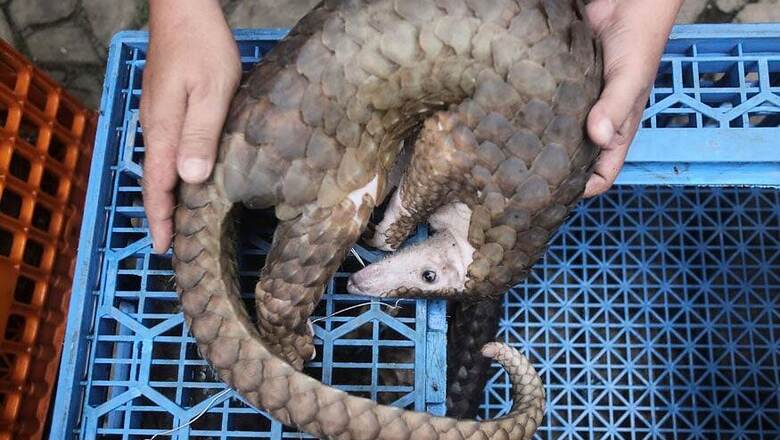
views
Villagers at Patakpur in Punhana, Haryana killed a pangolin after they spotted the 2.5-feet-long creature and confused it with a snake.
Pangolins are scaly anteaters and only mammals to sport keratin scales covering their skin. The Indian Pangolin is a Schedule I species given the highest protection under the Wildlife Protection Act.
A villager said that it looked different and dangerous and scared villagers started chasing it. Threatened, the pangolin ran towards the people and they killed it, The Times of India reported.
Rajinder Prasad, district forest officer (wildlife, Gurugram), revealed that they got a call after it had died and a post-mortem revealed it had been beaten to death by the mob. The forest department filed a complaint at the Punhana police station and an FIR was filed.
Wildlife officials stress that the incident highlights the importance of creating awareness with Prasad stating that it was an "unfortunate" affair and people did not know what it was. "There is a need to create awareness about such species," Prasad said, adding that people need to know it is harmless and plays an important role in the ecosystem.
Wildlife enthusiast Anil Gandas was one of those who got a call after the pangolin was killed. He said that he has been rescuing animals in the Aravallis since 2006 and it is an extremely rare species. He said that only once, about two and a half years ago did he receive a call from a villager in Dabripur about a pangolin he had locked in his house. He said that no one had called him this time to save the creature.
Gandas revealed that pangolins were common in Uttarakhand but not found in the Aravalis even 25 years ago.
Amit Chaudhery, founder of Earth Quotient and Naturalist explained that the Aravalis had more moisture at a point of time and as it has turned drier because of desertification it has scattered pangolin habitats.
The Indian Pangolin, has been categorised as "endangered" by the International Union for Conservation of Nature (IUCN) because of habitat destruction and increased trafficking. The pangolin has been hit hard since it is traded for its flesh, scales and skin.




















Comments
0 comment